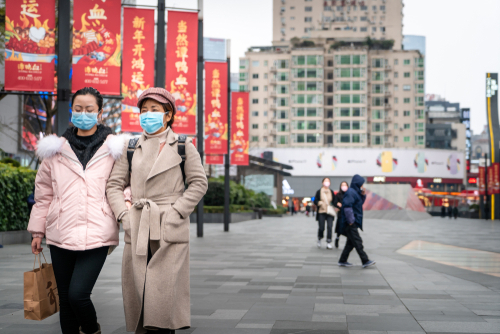
Asia | China | Economics & Growth | Emerging Markets | Politics & Geopolitics

Asia | China | Economics & Growth | Emerging Markets | Politics & Geopolitics
This article is only available to Macro Hive subscribers. Sign-up to receive world-class macro analysis with a daily curated newsletter, podcast, original content from award-winning researchers, cross market strategy, equity insights, trade ideas, crypto flow frameworks, academic paper summaries, explanation and analysis of market-moving events, community investor chat room, and more.
The zero-Covid (ZC) situation in China is fluid, but how should markets react? I can think of four broad scenarios to guide our thinking:
In recent days, Chinese markets traded lower on a combination of scenario #2 and #1.
But in reality, we are in scenario #3, in our view. The Chinese press keeps reminding everyone of China’s ZC strategy, but simultaneously there is no real action to bring strict lockdowns back. The decision has been taken to re-open after the winter. This is a rocky road to herd immunity and a reflation/reopening rally.
Somewhat in the background to the protests and the ZC debate has been the support the government has announced for the property sector.
The government appears to have pulled out all the stops to support the sector. Two weeks ago, the central bank and the banking regulator released a new package of 16 measures to unclog bank lending to developers, complete stalled construction projects, and merge developers. Also, major banks announced $160bn would be pumped into the ailing sector. I expect more property-boosting regulation to follow, as it has become clear the central government has prioritised rescuing the property sector.
In summary, the policies of the ‘three red lines’ and ‘two concentrations’ are now on hold. Announced in 2020, these policies had been responsible for the severe slowdown in the sector. Temporarily ending them is the most meaningful step Chinese policymakers could have taken if the goal is to provide a near-term boost to property.
In recent weeks, China’s yield curve has bear-steepened as the market has become more optimistic for the economic outlook. On Friday, the PBOC cut the RRR rate by 25bp, as was widely expected after the State Council had hinted earlier at an upcoming easing. While the cut injects CNY500bn of liquidity into the money market, it is more like a redistribution of liquidity along the maturity profile rather than a net addition. The liquidity unlocked by this cut will replace the (short-term) MLF funding that is maturing.
The RRR cut will anchor the front end of the yield curve. As we head into 2023, the curve will have a steepening bias (Chart 2). The long end yields will reflect a bottoming out of the economy and focus on the potential for rising inflation expectations next year.
During November, a price rebound was visible in all China asset classes (except CGBs). Table 1 summarizes the market moves. The flows driving the bounce were mostly profit-taking on shorts and reducing underweights. As we head into the new year and investors become more convinced of an eventual reopening, we expect overweights to drive the rally forward.
The best strategy to reflect our preferred ZC scenario (i.e., scenario #3) is to be long equities. As such, we entered a long Hang Seng position two weeks ago.
As for CNH, we are neutral now. CNH is likely to appreciate in a reopening scenario. However, reopening would also result in rising imports and a contraction in the trade balance, which would hamper any rally.
Spring sale - Prime Membership only £3 for 3 months! Get trade ideas and macro insights now
Your subscription has been successfully canceled.
Discount Applied - Your subscription has now updated with Coupon and from next payment Discount will be applied.